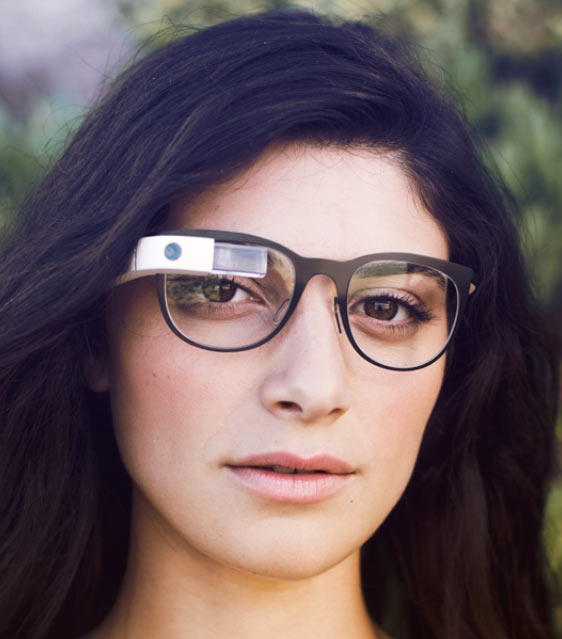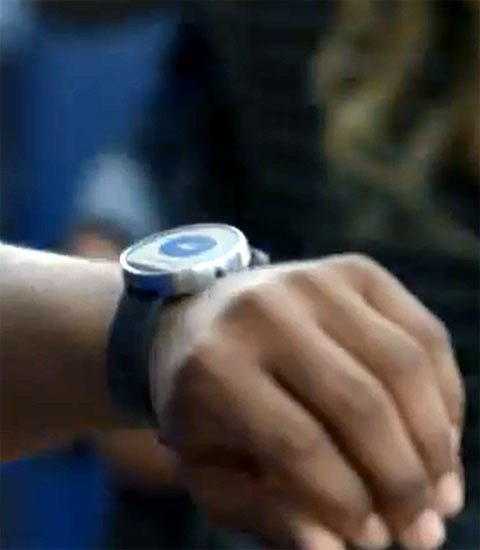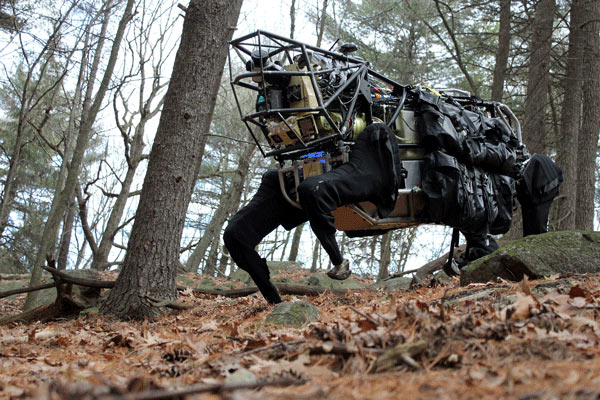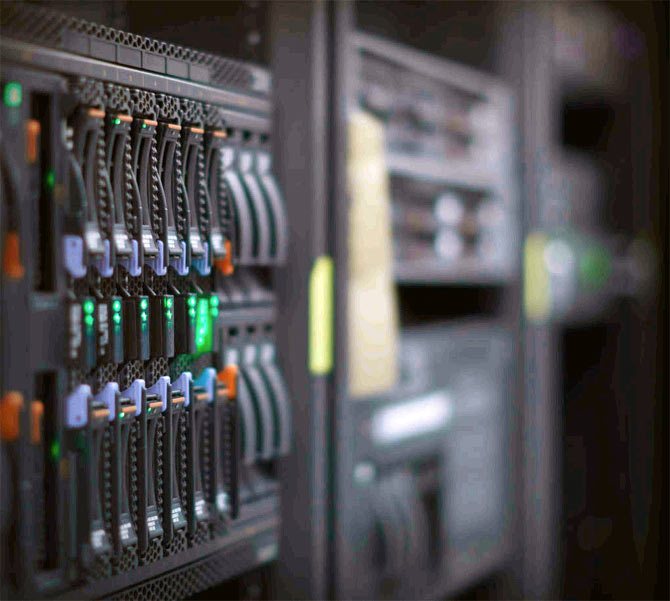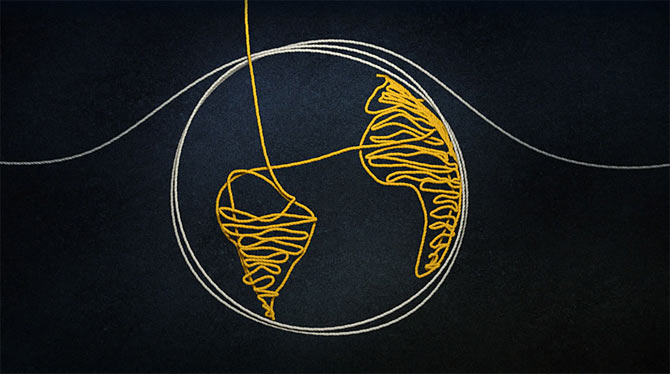 | « Back to article | Print this article |
7 WOW technologies that will change the way we live
From wearable devices to big data to augmented reality, here is a lowdown on technologies that will make a huge difference to our lives.
Augmented Reality and Virtual Reality
Augmented Reality is a concept where the physical, real world (what you see) is augmented or supplemented with computer-generated information.
Project Glass is Google's attempt to create augmented reality glasses. It enables you to record and share what you see, as you see, in a hands-free manner.
It displays information in front of you, understands what you speak, answers your questions and much more.
Currently available only in the US for a little over $1500 and to limited users, this glass lets you take a picture by winking an eye!
On March 25 Facebook announced that it acquired Oculus VR, a company that build a virtual reality headset.
Unlike augmented reality where you still are in the real world with information augmented on it, in virtual reality, you enter a completely imaginary, computer generated world; like a game or a movie scene or a place very far away with other people.
Until now, virtual reality was a technology mainly used in gaming. It will be interesting to see what Facebook does with it.
Nishma Shah is a technology enthusiast and start-up mentor plugged into the latest happenings in the Silicon Valley. Follow #Startups for more updates!
Reader Invite
Are you a gadget/gaming wizard/afficianado? Would you like to write on gadgets, gaming, the Internet, software technologies, OSs and the works for us? Send us a sample of your writing to gadgetsandgaming@rediffmail.com with the subject as 'I'm a tech wizard/afficianado' and we will get in touch with you.
7 WOW technologies that will change the way we live
Wearable devices
Apple is rumoured to be working on an iWatch, a smart watch that will mark Apple's foray into the wearable-technology space.
According to rumours, apart from connecting to your iOS device and bringing your important updates and notifications, the iWatch will have a 'Healthbook' app with advanced monitoring capabilities to track your physical activity, food intake, blood oxygen saturation, breathing rate and hydration.
On March 18 Google announced Android Wear. According to an update by Google, they are working with several consumer electronics manufacturers, including Asus, HTC, LG, Motorola and Samsung; chip makers Broadcom, Imagination, Intel, Mediatek and Qualcomm and fashion brands like the Fossil Group on a watch expected to be available for users later this year.
It will accept voice commands followed by ‘OK Google’ to enable users to ask questions and get things done.
Similar to the iWatch, Google Watch will have several sensors to monitor your health and fitness.
Google even released developer tools to enable app developers push important notifications to the Watch.
And if you can't wait to get your hands on a wearable device, check out Fitbit [http://www.fitbit.com/] and Jawbone [https://jawbone.com/], the popular wearable devices already available for consumers.
7 WOW technologies that will change the way we live
Internet of things
The concept of IoT was created with a vision to connect all of a user's devices to each other, that is, enable your devices to talk to each other without human intervention.
What if your refrigerator sensed that you needed to buy milk, communicated the same to your phone which woke up your shopping app? All you would have to then do is say ‘OK’ and an online order is automatically placed?
What if your watch detected you have fallen asleep on your couch and sent a message to your TV and lights to switch off?
What if your phone realised you are 10 minutes away from home, the temperature is too high for your comfort and sent a message your air conditioner to turn on?
Over the past few months, Google has spent well over $4 million to acquire 7-8 companies in this space; its last three being Boston Dynamics, a robotics firm, Nest that developed a learning thermostat, a smoke and carbon monoxide detector and Deepmind, a London-based artificial intelligence company.
7 WOW technologies that will change the way we live
Big Data Analysis and Artificial Intelligence
All the sensors in the wearable devices and gadgets are going to collect a lot of information about users. Users themselves create a lot of data in the form of blogs, posts, tweets and pictures.
Social networks reveal how users are connected to each other and how they influence each others’ lives. All this ‘big’ amount of ‘data’ needs to be collected, stored, ‘analysed’ and processed really quickly for devices to make ‘intelligent’ decisions at the right time.
Facebook created a new artificial intelligence lab last year; Google acquired Deepmind for $400 million; IBM's Watson is a supercomputer that can understand questions in human language and answer them to win quiz competitions and Yahoo! recently acquired LookFlow, a photo analysis start-up.
Google's aim is to build a search engine so powerful that it could act as a cyber friend for users.
Recently at TED, a popular technology conference, Larry Page, Google's co-founder expressed his interest in making public medical records available for research. This would help statisticians analyse trends and help prevent diseases that may end up saving lives.
7 WOW technologies that will change the way we live
Internet for everyone
On March 27 Facebook announced that it's connectivity lab aimed at providing Internet to the third world via solar powered drones, satellites, lasers and more.
Internet.org, a partnership between Facebook and industry giants like Nokia, Qualcomm and NASA hopes to use these air- and space-born methods to bring Internet to the 5 billion people who currently don’t have it.
Google, on the other hand, has its Project Loon, which uses high altitude, huge helium balloons that can fly twice as high as airplanes to beam Internet to the two-thirds of the world's population, living in remote and rural areas that don't have Internet today.
People can attach a special antenna to their building to connect to the balloon network.
7 WOW technologies that will change the way we live
Self-driving cars
You may have heard about cars with self-parking systems. You find a parking spot, position the car correctly and use the navigation system to tell the car to auto-park while you wait on the curb. How does the car do it?
It uses all types of sensors and this itself has been a significant achievement in the driver-less car technology. If this was not enough, everyone from top car manufacturers like BMW, Mercedes-Benz, Lexus and Volvo to Internet companies like Google are working on 'autonomous' cars or cars that drive themselves.
Google's cars are said to be less accident-prone than humans even!
7 WOW technologies that will change the way we live
3-D Printers
How do printers work today? Currently, only two-dimensional: you select a document, give the print command and the printer uses ink to sketch the document line after line until the entire document is covered.
What if you could select a three-dimensional object, give the print command and a printer used manufacturing material like plastic, nylon, etc. to create the object layer after layer until the entire object is created? The object is created just like that, out of thin air!
Right now if you need a part for your microwave, your mechanic will get it from a retailer who, in turn will have it ordered from a chain of distributors tracing all the way to the manufacturer, somewhere in China.
With 3-D printers, you can just print the part, right at your home!
What if you could just print your food, the pizzas and pastas?
Foodini is one such printer. See more at http://techcrunch.com/2014/03/27/foodini/
Biozoon is another German company that is working on a 3-D printer that prints food that melts in your mouth; typically for elderly people who find it difficult to swallow food.
Reader Invite
Are you a gadget/gaming wizard/afficianado? Would you like to write on gadgets, gaming, the Internet, software technologies, OSs and the works for us? Send us a sample of your writing to gadgetsandgaming@rediffmail.com with the subject as 'I'm a tech wizard/afficianado' and we will get in touch with you.
Top stories we would want you to read
Click on MORE to see another feature...
